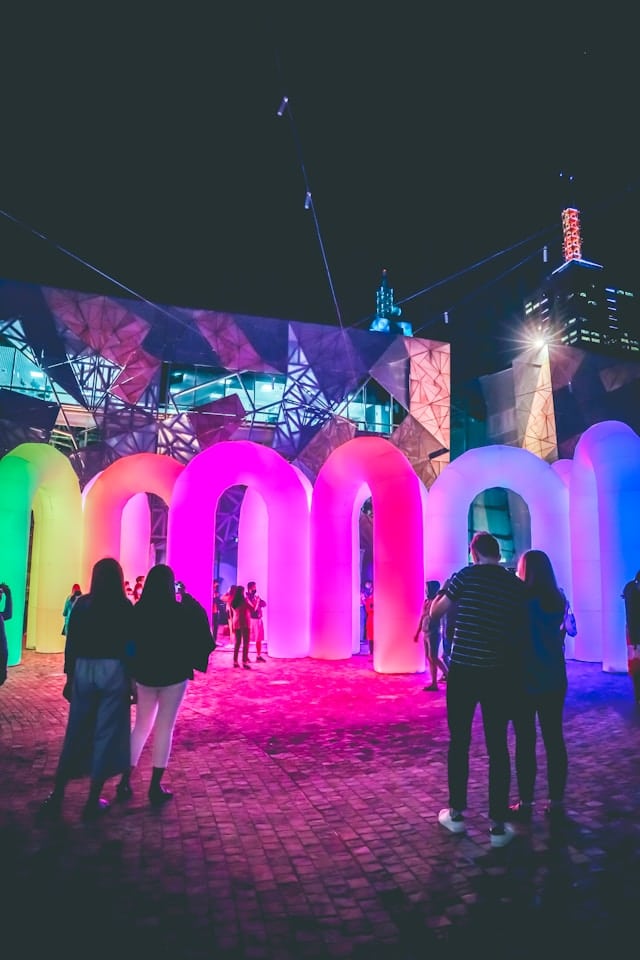How Does the Integration of Public Art Influence Neighborhood Real Estate Prices?

Public art has the power to transform not only the visual aesthetics of a city but also its socio-economic fabric. It is no longer simply a decoration in parks or a splash of color on an otherwise monotonous urban landscape. Instead, public art has become a significant driver in the development of cities, playing a critical role in community-building, enhancing local identity, and even influencing real estate values.
Historically, the relationship between art and urban development has been intertwined. From the grand murals in ancient cities to the iconic statues in modern metropolises, art has always been a part of the urban fabric. However, it is in recent years that the impact of public art on city development has been recognized and systematically studied.
Also to see : How Can Real Estate Development Incentivize Sustainable Commuting Options?
Public art projects, whether they are monumental sculptures in a city park or vibrant murals in a neighborhood alley, contribute to the city’s identity and sense of place. They not only make the city more attractive but also tell a story about its history, values, and aspirations.
In Chicago, for example, the iconic Cloud Gate, lovingly referred to as ‘the Bean,’ has become a symbol of the city’s innovative spirit and cultural vibrancy. Not only does it draw tourists and locals alike to Millennium Park, but it also contributes to the economic vitality of the surrounding area.
This might interest you : What Are the Best Practices for Real Estate Companies to Improve Online Reputation?
At a local level, public art can ignite community pride and engagement. Artist-led projects often involve local residents in the creation process, encouraging them to take ownership of their neighborhoods. This sense of civic pride can translate into increased care for the community, decreased crime rates, and ultimately, a more desirable place to live.
It is becoming increasingly clear that public art can have a significant impact on property values. This is largely due to the fact that public art can transform an area from a mere collection of buildings into a vibrant, attractive, and unique community.
A study published in the journal Urban Studies found that neighborhoods that invested in public art saw an increase in property values. While the increase was modest, it was statistically significant, suggesting that public art can indeed contribute to economic development.
Moreover, real estate agents and property developers have recognized the value of public art, often incorporating it into their projects. From large-scale sculptures in the lobby of a luxury condo building to curated art collections in a new hotel, art is seen as a value-added amenity that can attract potential buyers and enhance the overall appeal of a property.
Once considered a sign of urban decay, street art is now recognized as a powerful tool for urban renewal and economic revitalization. Cities around the world are commissioning artists to create street art in an effort to revitalize neglected neighborhoods and attract tourists.
In Detroit, the city-sponsored Murals in the Market project has transformed the city’s Eastern Market district. The colorful murals, created by both local and international artists, have not only brightened up the neighborhood but also drawn visitors and sparked economic activity.
Similarly, in Chicago’s Pilsen neighborhood, street art has become a symbol of the community’s vibrant cultural heritage and a driver of economic development. The neighborhood, once plagued by gang violence, has seen a resurgence thanks to its lively art scene.
While public art can contribute to city development and property values, it’s not without its challenges. The process of creating public art often involves navigating complex regulations, securing funding, and engaging with the local community. Additionally, public art can sometimes lead to gentrification, pushing out long-term residents who can no longer afford the rising property prices.
However, despite these challenges, public art continues to offer immense opportunities. It can engage communities, stimulate economic activity, and contribute to the vibrancy and diversity of cities. Moreover, as cities continue to evolve, so too will the role of public art, offering new ways for people to connect with their communities and their environment.
For real estate developers, incorporating public art into their projects can not only enhance the appeal of their properties but also contribute to the broader goals of city development. As more and more cities recognize the value of public art, we can expect to see more art in our public spaces, enriching our urban experience and shaping the future of our cities.
In numerous cities worldwide, public art requirements in real estate developments have become a crucial part of urban planning strategies. These requirements often stipulate that a certain percentage of a project’s budget should be dedicated to incorporating public art within the development or contributing to a public art fund. In Los Angeles, for instance, the "Percent for Art" requirement mandates that all private development projects with a valuation of $500,000 or more set aside 1% for public art.
Public art requirements are not only a testament to the increasing recognition of the role of art in city development but also a practical strategy for funding public art initiatives. These initiatives can range from large sculptures and murals that become local landmarks to interactive installations that draw in residents and tourists alike.
Moreover, these requirements can result in more thoughtful and creative placemaking. By integrating art into the design process from the outset, developers can create spaces that are not only aesthetically pleasing but also foster a sense of community and local identity. For example, in San Francisco, art programs involving community members in the creation process have led to powerful expressions of local culture and heritage, enhancing the neighborhood’s desirability and hence, real estate value.
However, it’s important to note that while public art can boost property values, it should not be seen merely as an investment strategy. At its core, public art is about enriching public spaces, engaging communities, and enhancing the urban experience.
Public art has emerged as a potent catalyst for urban transformation, affecting numerous aspects of city life from community engagement to real estate values. Whether large-scale sculptures, street art, or interactive installations, public art projects can ignite community pride, enhance local identity, and stimulate economic activity.
However, public art is not a panacea for all urban ills. While it has been linked to increased property values, it can also contribute to gentrification, pushing out long-term residents who can no longer afford the rising property values. Therefore, it is important for cities and real estate developers to balance the benefits of public art with the need for affordable housing and inclusive development.
Despite these challenges, the future of public art looks promising. As cities around the world continue to recognize the value of public art, we can expect to see more creative, inclusive, and impactful public art initiatives.
Cities like Los Angeles and San Francisco, with their comprehensive art programs, serve as models for how to integrate art into urban development. They demonstrate that when done well, public art can contribute to a vibrant urban landscape, foster a sense of community, and create a unique sense of place.
Ultimately, public art is more than just decoration or an investment strategy. It is a powerful tool for city development, capable of transforming not only our urban landscapes but also our communities, our cities, and our lives. As we move further into the 21st century, it is clear that public art will continue to play a vital role in shaping the future of our cities.
